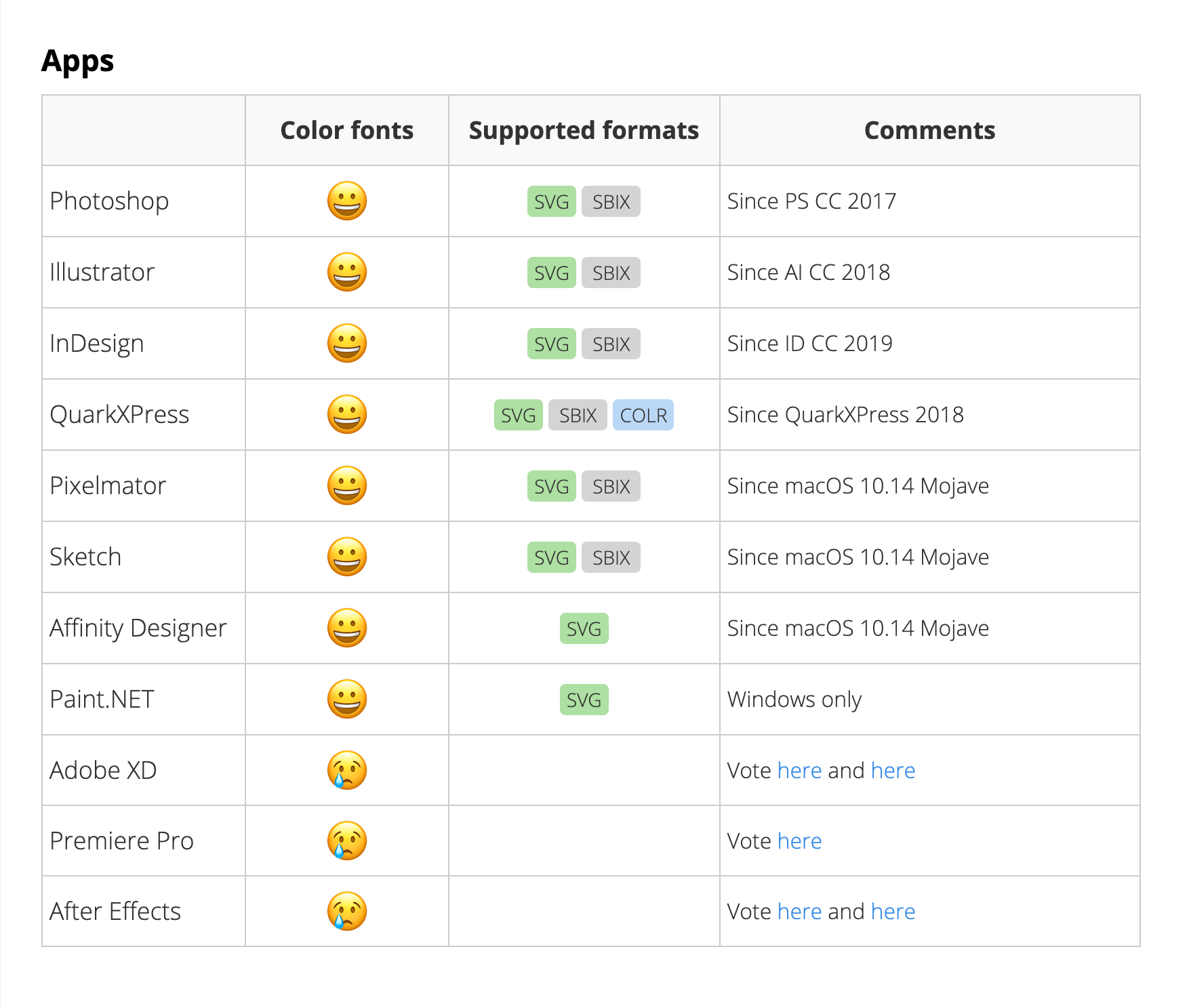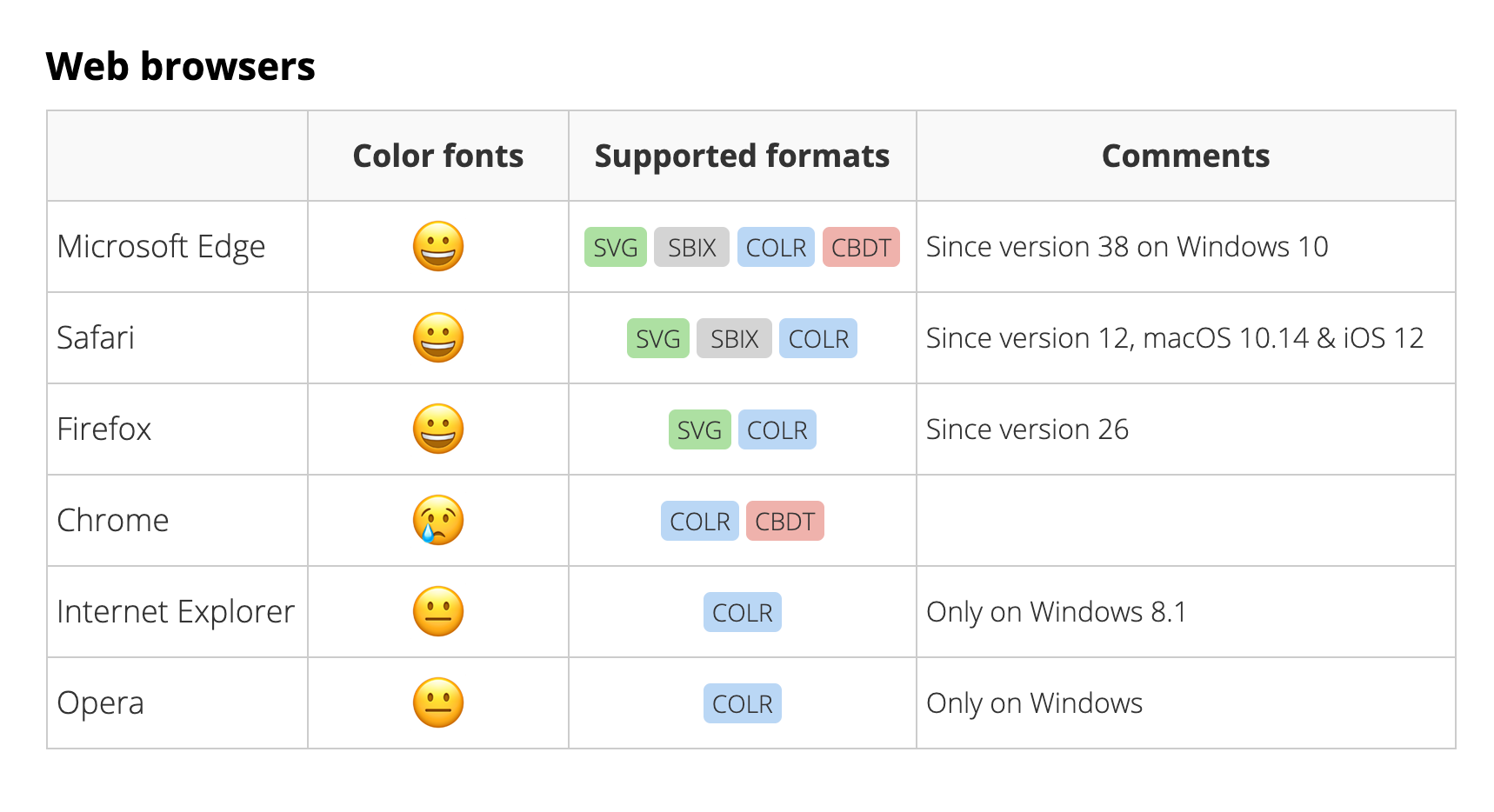These fonts can be huge.
A color font file is generally larger than a regular font file, and a lot more when the font embeds high-resolution bitmap characters. Whereas fonts usually weigh tens to a few hundred kilobytes, color vector fonts can reach hundreds of kilobytes to a couple megabytes depending on their visual complexity. Color bitmap fonts may range from a few megabytes to tens of megabytes, and sizes increase when multiple color font formats are embedded in a single file.
Support in different browsers.
When the browser doesn't support the file type, the font will fall back to B&W. Therefore, a fallback for color font is pretty important.


